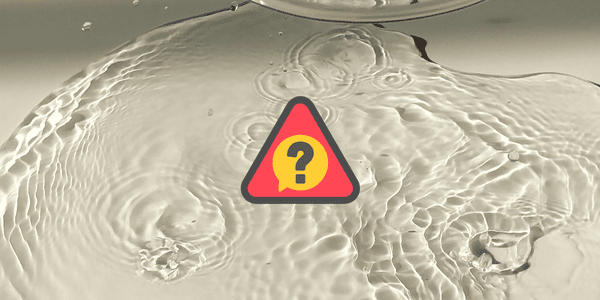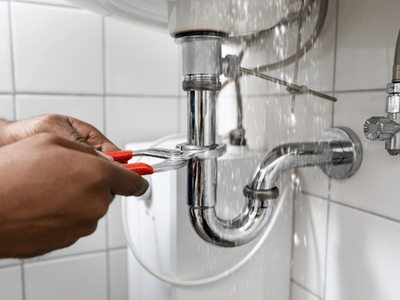
You’re enjoying a quiet day at home when suddenly you notice water pooling around your kitchen sink. Whether it’s a burst pipe, a leaking pipe under the sink, or an appliance malfunction, you now have a serious situation on your hands.
How much water does it take to cause water damage? And how quickly can water wreak havoc on your home?
In this post, we’ll walk you through how water causes damage, how long it takes for water to ruin things, and how fast you need to act to save your home.
As homeowners in San Antonio know all too well, water intrusion can happen at any time—from a severe storm to a small leak from a kitchen faucet. Water is one of the most destructive forces for your home, but with the right knowledge and a quick response, you can minimize damage and prevent bigger issues down the line.
Let’s dive in.
How Much Does It Take to Cause Water Damage?
You may be surprised to learn that how much water does it take to cause water damage doesn’t necessarily mean a flood or a torrential downpour. The damage depends on several factors—like the type of water, how long it sits, and what materials it comes into contact with.
Minor Damage from Small Leaks
A small leak can cause minor damage over time. Picture this: a leaking pipe under your bathroom sink that drips a bit of water each day. While it may not seem like much at first, this water can slowly seep into the wood of your cabinets or drywall, causing warping or mold growth. How quickly does this happen? If left unchecked, water can start to cause damage within the first 24 hours, leading to long-term issues.
Resource: San Antonio Water System: How to Detect Leaks
Moderate Damage from Appliance Malfunctions

Water doesn’t have to be a torrent to do damage. Appliance malfunctions, like a dishwasher overflow or a leaking washing machine, can cause moderate damage if not addressed quickly. These types of water issues may not flood your home, but they can certainly lead to visible damage—water pooling around appliances or seeping under the floorboards. If water is left to sit for too long, you’ll start dealing with standing water that seeps into flooring, causing structural damage.
Significant Damage from Burst Pipes and Flooding
Now, let’s talk about extensive flooding. A burst pipe or flooded basement from a severe storm can unleash a large amount of water in a short amount of time. This is when you’ll see visible damage right away—wet carpets, soaked drywall, or flooded rooms. In cases like this, the damage can escalate quickly, especially if the water continues to rise or if the water has been standing for too long. The key here is speed: how fast can water cause damage? The answer is, very fast—especially if you don’t get on it right away.
How Fast Can Water Cause Damage?
Water damage can happen shockingly fast. That’s why it’s important to act quickly when water starts seeping into your home. Even a small leak can cause serious damage in just a few hours. Here’s how quickly different types of water damage can progress:
In the First 24 Hours: The Clock Is Ticking
Within the first 24 hours of water exposure, mold and mildew can begin to grow. This can lead to both health issues and long-term structural damage. Water can also start to warp wood and saturate drywall, making it brittle and prone to collapse. The longer you wait, the worse the structural damage can get. If you don’t extract the water quickly, it will keep seeping deeper into your materials, making water damage repair more expensive and time-consuming.
48-72 Hours: The Damage Gets Worse
If you haven’t addressed the issue within 48-72 hours, the effects become more significant. Standing water can weaken the foundation of your home, and your flooring could start to buckle or warp. Electrical problems may also arise, as water reaches electrical outlets, wiring, and appliances. At this stage, it’s essential to start water extraction immediately to prevent further complications.
Beyond 72 Hours: Significant Damage
If water has been allowed to linger for more than three days, you’re looking at extensive flooding that may require full renovations. By now, mold growth is likely to be widespread, and it may have spread behind walls, under floors, and into hidden corners of your home. This isn’t just a “quick fix” situation—it’s going to require serious cleanup and professional water removal to ensure your home is restored safely.
Factors That Influence How Quickly Water Causes Damage
Several factors influence how fast water causes damage. Understanding these factors will help you act quickly when it matters most.
The Type of Water
Not all water is created equal. For example, gray water (from your washing machine or dishwasher) may contain contaminants, while black water (from a sewage backup or flood) is highly hazardous and can cause more significant damage. Black water needs to be handled by professionals, as it can bring in bacteria, viruses, and mold spores.
How Much Water Is Involved
Naturally, more water causes more damage. A small leak may only dampen a small area, but a burst pipe or flooding can lead to widespread issues. The more water that enters your home, the harder it will be to extract water effectively, and the more damage it can do.
The Materials Affected
Some materials are more susceptible to water damage than others. Wood, drywall, and insulation are particularly vulnerable. These materials absorb moisture quickly, which can lead to structural damage in no time. Vinyl flooring or ceramic tile, on the other hand, might resist water to some extent, but the damage to other areas (like subfloors) can still be severe.
Humidity and Temperature
Humidity levels play a big role in how fast water spreads and how quickly damage occurs. In areas with high humidity, like San Antonio, water can soak into materials faster. This makes it more likely for mold to grow if the area isn’t dried properly. On the flip side, low humidity can cause wood to dry out and crack, leading to different types of damage.
What You Can Do to Prevent Water Damage
As we’ve seen, water damage can happen quickly, but there are steps you can take to protect your home and prevent major issues.
Regular Inspections
The best way to prevent water damage is to catch it early. Inspect your plumbing regularly, check appliances for leaks, and make sure your roof and gutters are free of debris. If you notice minor damage, address it right away to prevent it from escalating into something more serious.
Install Water Detection Devices
Consider installing water leak detectors in areas like under sinks, near appliances, and in your basement. These devices will alert you immediately when they detect water, allowing you to address the problem before it becomes a big issue.
Proper Drainage
Make sure that water is properly draining away from your home. Gutter cleaning and ensuring your landscaping directs water away from your foundation can go a long way in preventing flooding.
Keep Your Home Well-Ventilated
Good airflow helps prevent moisture buildup. Use fans or dehumidifiers in areas prone to humidity, like basements and attics. This helps keep things dry and prevents water from lingering long enough to cause damage.
When to Call the Professionals
If water has already caused significant damage or if you’re dealing with black water, it’s time to call the experts at Complete Flood Restoration. Water damage repair requires the right equipment and expertise to ensure your home is properly restored.
Our team can handle water extraction, dry out your home, and address mold or structural damage that may have occurred. We understand how overwhelming water damage can be, but we’re here to make the restoration process as smooth and efficient as possible.
Don’t Wait—Act Fast to Minimize Damage
How fast can water cause damage? The answer is, very fast. Whether it’s a small leak or a burst pipe, water can do a lot of harm in a short amount of time. But with the right steps, you can minimize damage and get your home back to normal.
The key is to act quickly. The sooner you shut off the water, remove standing water, and start drying out the affected area, the less likely you are to experience extensive flooding or structural damage. And if things start to get out of hand, remember, Complete Flood Restoration is here to help you every step of the way. We’ve been serving San Antonio for over 20 years, and we know exactly how to handle water damage situations.
Call Complete Flood Restoration today if you’re dealing with water damage. We’ll make sure your home is restored quickly and professionally—so you can get back to your routine with peace of mind.
